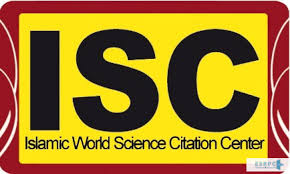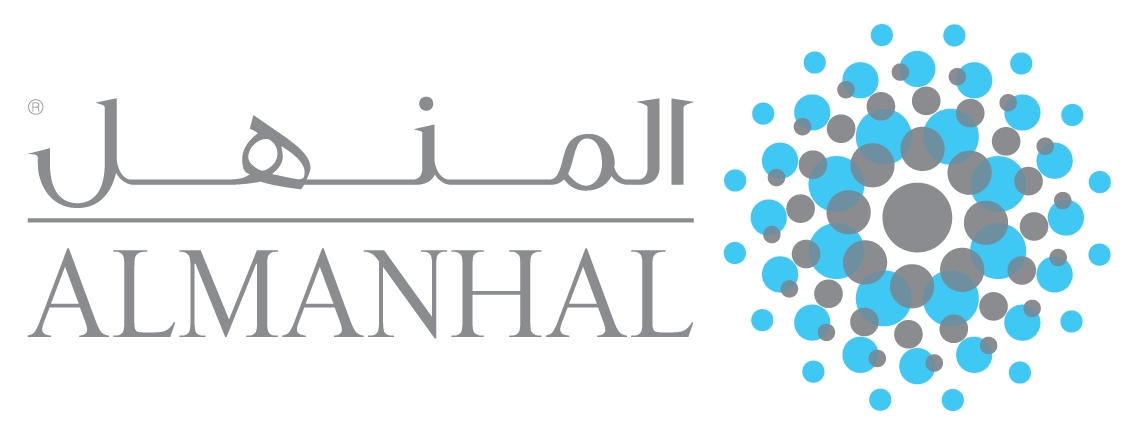Impact of Human Capital Skills on Corporate Performance: A Case of Islamic Banks in Pakistan
DOI:
https://doi.org/10.31436/jif.v9i1.402Abstract
The education system in Islamic Banking and Finance (IBF) is trying to respond to the challenges of a fast-growing industry of IBF all over the world especially in Pakistan. This study examines the impact of human capital skills on the Islamic bank's performance in Pakistan. An empirical quantitative study was conducted using a survey-based research strategy to explore the areas for improvement in education for IBF. The population of this research covers Pakistan's 5 full-fledged Islamic banks and 9 traditional banks having more than 50 Islamic branches. The empirical findings revealed that a clear understanding of Islamic finance is crucial and there is a need to gain more exposure and experience in the banking sector and knowledge. Besides that, a proper education of Islamic banking provides significant impact on the performance of Islamic banks. The study concluded that general banking employability skills possessed by Islamic bank employees has an insignificant influence on the corporate performance of Islamic banks. The study is quite genuine concerning the topic, variables, and the approach used to conduct it.
Downloads
References
Agarwala, T. (2003). Innovative Human Resource Practices and Organizational Commitment: An Empirical Investigation. International Journal of Human Resource Management, 14(2), 175-197.
Albrecht, W. S., & Sack, R. J. (2000). Accounting Education: Charting the Course through a Perilous Future (Vol. 16): American Accounting Association Sarasota, FL.
Alpay, E., & Jones, M. (2012). Engineering Education in Research-intensive Universities. European Journal of Engineering Education, 37(6), 609-626.
Ali, Q., Ali, H., & Kamis, U. H. H. (2018). Evaluation of Employees’ Perception Towards Islamic Banks Growth. Journal of Islamic Banking and Finance, 35(4), 70-86.
Antonio, M. S., Sanrego, Y. D., & Taufiq, M. (2012). An Analysis of Islamic Banking Performance: Maqashid Index Implementation in Indonesia and Jordania. Journal of Islamic Finance, 176(813), 1-18.
Aziz, M. I., Afthanorhan, A., & Awang, Z. (2016). Talent Development Model for a Career in Islamic Banking Institutions: A SEM Approach. Cogent Business & Management, 3(1186259), 1-11.
Babalola, J. B. (2003). Budget Preparation and Expenditure Control in Education. Basic Text in Educational Planning. Ibadan Awemark Industrial Printers.
Barney, J. (1991). Firm Resources and Sustained Competitive Advantage. Journal of management, 17(1), 99-120.
Becker, G. S. (1964). 1993. Human Capital: Chicago: University of Chicago Press.
Bontis, N., & Fitz-Enz, J. (2002). Intellectual Capital ROI: A Causal Map of Human Capital Antecedents and Consequents. Journal of Intellectual capital, 3(3), 223-247.
Bryman, A., & Bell, E. (2007). Business Research Strategies. Business Research Methods, 226-238.
Cameron, C., & Dickfos, J. (2014). ‘Lights, Camera, Action!’Video Technology and Students' Perceptions of Oral Communication in Accounting Education. Accounting Education, 23(2), 135-154.
Casebeer, A. L., & Verhoef, M. J. (1997). Combining Qualitative and Quantitative Research Methods: Considering the Possibilities for Enhancing the Study of Chronic Diseases. Chronic Diseases in Canada, 18(3), 130-135.
Camps, E. (2016). The Impact of Investment in Human Capital on Economic Development: An Empirical Exercise Based on Height and Years of Schooling in Spain (1881-1998). Working Papers 897, Barcelona Graduate School of Economics.
Carmeli, A., & Tishler, A. (2004). The Relationships between Intangible Organizational Elements and Organizational Performance. Strategic Management Journal, 25(13), 1257-1278.
Cheville, R. A., & Heywood, J. (2019). Tensions between Industry and Academia: Policy Making and Curriculum Development. In: Christensen S., Delahousse B., Didier C., Meganck M., Murphy M. (eds) The Engineering-Business Nexus. Philosophy of Engineering and Technology, 32. Springer, Cham.
Choi, H. L. (2003). Knowledge Management Enablers, Processes, and Organizationa lPerformance: An Integrative View and Empirical Examination. Journal of Management Information Systems , 179-228.
Dess, G. G., & Shaw, J. D. (2001). Voluntary Turnover, Social Capital, and Organizational Performance. Academy of Management Review, 26(3), 446-456.
Dhir, S. (2019). The Changing Nature of Work, Leadership, and Organizational Culture in Future Ready Organizations. Corporate Culture, Management, Leadership, Job Redesign, Organizational Behavior, Innovation, Change Management, Human Resources, VUCA.
Easterlin, R. A. (1981). Why isn't the Whole World Developed? The Journal of Economic History, 41(1), 1-17.
Fleisher, B., Li, H., & Zhao, M. Q. (2010). Human Capital, Economic Growth, and Regional Inequality in China. Journal of Development Economics, 92(2), 215-231.
Foster, P. (1987). The Contribution of Education to Development. Economics of Education: Research and Studies, 93-100. Feinberg, R., & Kadam, R. (2002). Eâ€CRM Web Service Attributes as Determinants of Customer Satisfaction with Retail Web Sites. International Journal of Service Industry Management, 13(5), 432-445.
Fletcher, A. J., Sharif, A. W. A., & Haw, M. D. (2017). Using the Perceptions of Chemical Engineering Students and Graduates to Develop Employability Skills. Education for Chemical Engineers, 18, 11-25.
Garavan, T. N., Morley, M., Gunnigle, P., & Collins, E. (2001). Human Capital Accumulation: The Role of Human Resource Development. Journal of European Industrial Training, 25(2/3/4), 48-68.
Gliem, J. A., & Gliem, R. R. (2003). Calculating, Interpreting, and Reporting Cronbach’s Alpha Reliability Coefficient for Likert-type Scales. Midwest Research-to-Practice Conference in Adult, Continuing, and Community Education.
Grant, C., & Dickson, B. (2006). Personal Skills in Chemical Engineering Graduates: the Development of Skills within Degree Programmes to Meet the Needs of Employers. Education for Chemical Engineers, 1(1), 23-29.
Gagne, R. M., Briggs, L. J., & Wager, W. W. (1992). Principles of Instructional Design, 4th Edition. Harcourt Brace College Publishers: USA.
Hair Jr, J. F., Sarstedt, M., Hopkins, L., & Kuppelwieser, V. G. (2014). Partial Least Squares Structural Equation Modeling (PLS-SEM): An Emerging Tool in Business Research. European Business Review, 26(2), 106-112.
Hair, J. F., Ringle, C. M., & Sarstedt, M. (2012). Partial Least Squares: The Better Approach to Structural Equation Modeling?. Long Range Planning, 45(5-6), 312-319.
Henseler, J., Ringle, C. M., & Sarstedt, M. (2015). A New Criterion for Assessing Discriminant Validity in Variance-based Structural Equation Modeling. Journal of the Academy of Marketing Science, 43(1), 115-135.
Hulland, J. (1999). Use of Partial Least Squares (PLS) in Strategic Management Research: A Review of Four Recent Studies. Strategic Management Journal, 20(2), 195-204.
Hassall, T., Joyce, J., Arquero Montano, J. L., & Donoso Anes, J. A. (2003). The Vocational Skills Gap for Management Accountants: The Stakeholders' Perspectives. Innovations in Education and Teaching International, 40(1), 78-88.
Hassan, A., & Mollah, S. (2018). Risk Management in Islamic Financial Institutions. In: Islamic Finance, Palgrave Macmillan, 223-230.
Hogan, R., Chamorroâ€Premuzic, T., & Kaiser, R. B. (2013). Employability and Career Success: Bridging the Gap between Theory and Reality. Industrial and Organizational Psychology, 6(1), 3-16.
Honig, B. (1998). What Determines Success? Examining the Human, Financial, and Social Capital of Jamaican Microentrepreneurs. Journal of Business Venturing, 13(5), 371-394.
Hsu, I.-C., Yeh-Yun Lin, C., Lawler, J. J., & Wu, S.-H. (2007). Toward a Model of Organizational Human Capital Development: Preliminary Evidence from Taiwan. Asia Pacific Business Review, 13(2), 251-275.
Iqbal, Z., & Mirakhor, A. (2017). Ethical Dimensions of Islamic Economics and Finance. In: Ethical Dimensions of Islamic Finance. Palgrave Studies in Islamic Banking, Finance, and Economics. Palgrave Macmillan, Cham.
Ismail, M. M. (2009). Human Capital Development and its Impact on Firm Performance: Evidence. The Journal of International Social Research, 2(8), 265-272.
Vidotto, J.D.F., Ferenhof, H.A., Selig, P.M., & Bastos, R.C. (2017). A Human Capital Measurement Scale. Journal of Intellectual Capital, 18(2), 316-329.
Kampelmann, S., & Rycx, F. (2012). The Impact of Educational Mismatch on Firm Productivity: Evidence from Linked Panel Data. Economics of Education Review, 31(6), 918-931.
Khan, A., & Mohammad, J. (2018). Current Practices in Higher Education Institutes Pakistan and Gap Reduction between Industry and Academia: A Systematic Literature Review Approach. Asian, Journal of Contemporary Education, 2(2), 173-181.
Khan, I. A., & Ghouri, A. M. (2011). Managerial Skills and Organizational Learning in SMEs of Pakistan. Indian Journal of Commerce & Management Studies, 11(4), 61-69.
Kline, S. J., & Rosenberg, N. (1986). An Overview of Innovation. The Positive Sum Strategy: Harnessing Technology for Economic Growth. The National Academy of Science: Washington D.C. Kreitner, R., & Kinicki, A. (2007). International OB: Managing Across Cultures. Boston: McGraw-Hill.
Krishnan, J.(2005). Audit Committee Quality and Internal Control: An Empirical Analysis. The Accounting Review, 80(2), 649-675.
Kormanik, M., & Shindell, T. (2014). Future Directions for HRD. Handbook of Human Resource Development, 688-708.
Marimuthu, M., Arokiasamy, L., & Ismail, M. (2009). Human Capital Development and its Impact on Firm Performance: Evidence from Developmental Economics. Journal of International Social Research, 2(8), 265-272.
McGuinness, S. (2006). Overeducation in the Labour Market. Journal of Economic Surveys, 20(3), 387-418.
Miller, C. S., & Dettori, L. (2008). Employers' Perspectives on IT Learning Outcomes. Paper presented at the Proceedings of the 9th ACM SIGITE Conference on Information Technology Education.
Majid, T. A., Azman, M. N. A., Zakaria, S. A. S., Yahya, A. S., Zaini, S. S., Ahamad, M. S. S., & Hanafi, M. H. (2011). Quantitative Analysis on the Level of IBS Acceptance in the Malaysian Construction Industry. Journal of Engineering Science and Technology, 6(2), 179-190.
Nunnally, J. C. (1994). Psychometric Theory 3E. Tata McGraw-Hill Education.
Nordhaug, O. (1998). Competencies Specificities in Organizations. International Studies of Management and Organisation, 28(1), 8-29.
Oliver, R. L. (2000). Customer Satisfaction with Service. Handbook of Services Marketing and Management, 247-254.
Olson, E. M., Slater, S. F., Hult, G. T. M., & Olson, K. M. (2018). The Application of Human Resource Management Policies within the Marketing Organization: The Impact on Business and Marketing Strategy Implementation. Industrial Marketing Management, 69, 62-73.
Passow, H. J. (2012). Which ABET Competencies do Engineering Graduates Find Most Important in their Work? Journal of Engineering Education, 101(1), 95-118.
Peake, W. O., & Marshall, M. I. (2009). Does Experience Determine Performance?A Meta-Analysis on the Experience-Performance Relationship. Paper presented at the Agricultural and Applied Economics Association 2009 AAEA & ACCI Joint Annual Meeting, Milwaukee, Wisconsin, July 26-28, 2009.
Pepis, S., & de Jong, P. (2019). Effects of Shariah-Compliant Business Practices on Long- Term Financial Performance. Pacific-Basin Finance Journal, 53, 254-267.
Rahman, S. U., & Zada, N. (2016). Contemporary Islamic Finance: An Introductory Analysis. Acta Islamica, 66(144), 1-17.
Rammal, H. G., & Zurbruegg, R. (2016). Awareness of Islamic Banking Products among Muslims: The Case of Australia. In Islamic Finance, Palgrave Macmillan, Cham, 141-156. Rethel, L., & Thurbon, E. (2019). Introduction: Finance, Development and the State in East Asia. New Political Economy, 25(3) 1-5.
Saad, N. M., Mohamed, M. O., Le, L. S., Haneef, M. A., & Ghani, M. A. (2013). Towards Adopting Zero Interest Financing (ZIF) and Profit and Loss Sharing (PLS) Principle in Islamic Microfinance: The Case of Amanah Ikhtiar Malaysia. Journal of Islamic Finance, 2(2), 38-50.
Shad, M. K., & Lai, F. W. (2019). Enterprise Risk Management Implementation and Firm Performance: Evidence from the Malaysian Oil and Gas Industry. International Journal of Business and Management, 14(9), 47-53.
Starkweather, J. (2012). Step out of the past: Stop using Coefficient Alpha; There are Better Ways to Calculate Reliability. Research and Statistical Support, 6, 6-12. Sultana, M. (2013). Impact of Training in Pharmaceutical Industry: An Assessment on Square Pharmaceuticals Limited Bangladesh. International Journal of Science and Research, 2(2), 576-587.
Shaikh, S. A. (2018). Financial Inclusiveness in Islamic Banking in Pakistan: A Comparison of Ideas and Practices. The Journal of Muamalat and Islamic Finance Research, 15(1), 51-71. Seleim, A., Ashur, A., & Bounties, N. (2007). Human Capital and Organizational Performance: A Study of Egyptian Software Companies. Management Decision, 45(4), 789-801.
Stoner, G., & Milner, M. (2010). Embedding Generic Employability Skills in an Accounting Degree: Development and Impediments. Accounting Education: An International Journal, 19(1-2), 123-138.
Usman, A. S., & Tasmin, R. (2016). The Role of Islamic Micro-finance in Enhancing Human Development in Muslim Countries. Journal of Islamic Finance, 5(1), 053-062.
Vyas, P., & Chauhan, G. (2013). The Preeminence Of Soft Skills: Need For Sustainable Employability. Journal of Social Science & Interdisciplinary Research, 2(5), 124-131.
Venkatesh, V., & Morris, M. G. (2000). Why don't Men Ever Stop to Ask for Directions? Gender, Social Influence, and their Role in Technology Acceptance and Usage Behavior. MIS quarterly, 115-139.
Zack, M., & Street, C. (2007). A Framework for Assessing the Impact of Knowledge on Firm Performance. Paper presented at The International Conference on Organizational Learning, Knowledge, and Capabilities.












